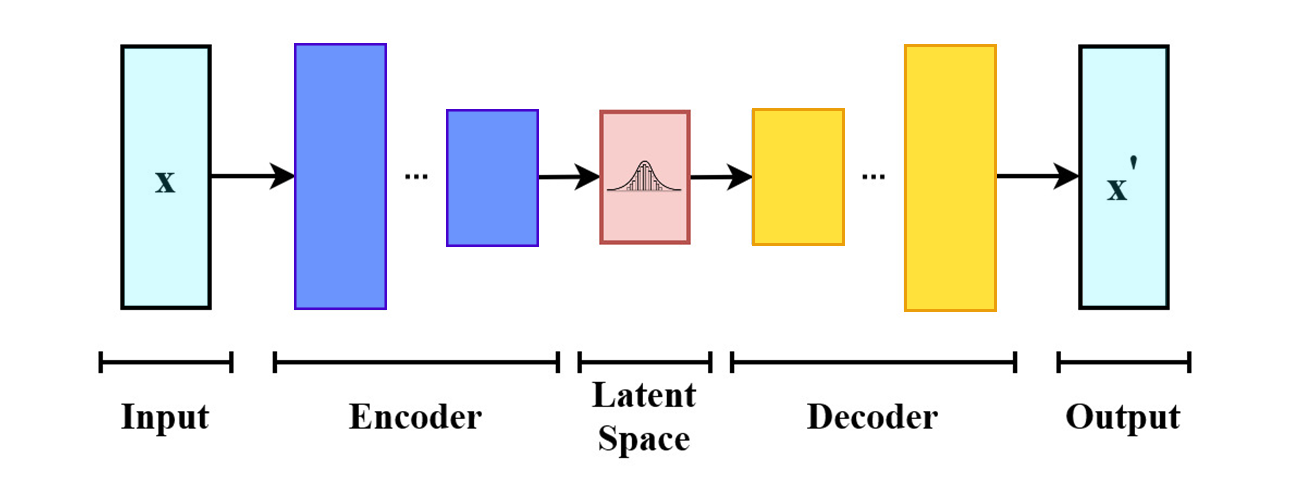A Primer on VAEs
Before diving into the quantum realm, let's briefly revisit classical VAEs. VAEs are a type of generative model, primarily used in deep learning to learn the underlying structure of data. They consist of two main components: an encoder and a decoder.
- The encoder takes input data and compresses it into a lower-dimensional space, known as the latent space. This latent representation is usually expressed as a distribution.
- The decoder takes this latent representation and attempts to regenerate the original data.
The 'variational' aspect arises from the encoder's use of variational inference to approximate the true posterior distribution of the latent variables.
From Classical to Quantum: The Motivation
While VAEs have shown promise in various applications, classical computing has its limitations, especially when dealing with enormous datasets or computationally intensive tasks. Quantum computing, with its inherent ability to process and store information in quantum bits (qubits), promises computational speed-ups for certain problems.
Introducing quantum algorithms into deep learning can enhance the efficiency of learning and generation processes, thus pushing the boundaries of what is achievable with classical VAEs. That's where QVAEs come into play.
Quantum Variational Autoencoders: How Do They Work?
A QVAE retains the fundamental architecture of a classical VAE, but with quantum circuits replacing some or all of its components. Here's a breakdown:
- Quantum Encoder: A quantum circuit processes the input data (which is encoded as a quantum state) and compresses it into a quantum latent space. This latent space is typically represented by the state of a few qubits.
- Quantum Decoder: Another quantum circuit takes the quantum latent representation and attempts to regenerate the original quantum state.
- Training The training process for QVAEs uses a quantum analog of backpropagation. The idea is to minimize the difference between the input and the reconstructed data, along with a term that penalizes divergence from the assumed latent space distribution (analogous to the variational regularization in classical VAEs).
Why QVAEs? Advantages and Applications
A QVAE retains the fundamental architecture of a classical VAE, but with quantum circuits replacing some or all of its components. Here's a breakdown:
- Handling Quantum Data: With the rise of quantum sensors and quantum simulations, there's a growing need to process quantum data directly. QVAEs can encode quantum data more naturally and efficiently than trying to adapt it to classical models.
- Potential Speed-ups: Certain quantum algorithms can solve problems faster than their classical counterparts. By using these algorithms in QVAEs, there's potential for accelerated training and inference.
- Quantum Generative Models: In quantum computing research and quantum chemistry, generating quantum states with specific properties is a task of high interest. QVAEs can be used to learn and generate these states.
Challenges and the Road Ahead
Like all emerging technologies, QVAEs are not without challenges:
- Noise and Errors: Current quantum computers, known as Noisy Intermediate-Scale Quantum (NISQ) devices, are prone to errors. These errors can impact the performance of QVAEs, making error-mitigation techniques crucial.
- Interfacing Quantum and Classical Systems: A hybrid system where classical networks interface with quantum circuits requires efficient protocols to ensure seamless operations.
- Resource Intensity: Quantum circuits, especially those used in deep learning applications, can be resource-intensive, requiring many qubits and gates.
The intersection of quantum computing and deep learning is a testament to the innovative spirit of the tech community. Quantum Variational Autoencoders symbolize this convergence, promising efficient processing of quantum data, potential computational speed-ups, and the generation of intricate quantum states.
While challenges persist, the collaborative endeavors of quantum physicists, computer scientists, and machine learning researchers worldwide will undoubtedly pave the way for robust and scalable QVAEs in the future. As quantum hardware continues to evolve and improve, so too will the algorithms that harness its power, ushering in a new era of quantum-enhanced machine learning.




